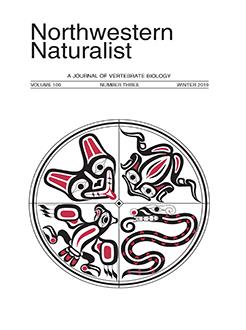In 2012, we explored the activity pattern of a pair of breeding Northern Pygmy-Owls based on 15 d (and 15 nights) of video monitoring of the nest-cavity entrance during the nestling period. Video monitoring ended after all 6 owlets had left the nest. All instances of nest activity (n= 288) occurred during the daylight period from 1 h before sunrise to 1 h after sunset, so the pair was not nocturnal. Most of the activity (60%) occurred during the diurnal period (1 h after sunrise to 1 h before sunset), and the rest was in the crepuscular period (the first and last 2 h of daylight). Prey type factored heavily into the frequency of activity at certain times of day, and on certain days during the nestling period. Activity during the diurnal period was dominated by the combination of vertebrate prey deliveries (80% of diurnal activity) and enticements of young from the nest (14% of diurnal activity). In contrast, activity during the crepuscular period was dominated by insect prey deliveries (60% of crepuscular activity). Overnight nest attendance activity, arriving and departing the nest to tend young through the night, accounted for 11% of crepuscular activity. For the entire 15-d monitoring period, deliveries of vertebrate prey made up 60% of all activity. The frequency of daily vertebrate prey deliveries was relatively similar for the first 10 full days of monitoring (range 9 to 13 deliveries), then peaked 3 to 4 d prior to fledging (range 15 to 20 deliveries) before declining on the last 2 d of the period, when deliveries of moths and enticement activity increased. We concluded that the pair's activity during the nestling period was consistent with a diurnal activity pattern. We encourage other researchers to refine the meanings of the terms diurnal and crepuscular and clarify how those terms should be used to define the primary activity pattern of a species.
How to translate text using browser tools
6 December 2019
DIURNAL ACTIVITY PATTERN OF A PAIR OF BREEDING NORTHERN PYGMY-OWLS
John F Deshler,
Eric D Forsman,
James K Swingle
ACCESS THE FULL ARTICLE

Northwestern Naturalist
Vol. 100 • No. 3
December 2019
Vol. 100 • No. 3
December 2019
activity pattern
crepuscular
daily time budget
Glaucidium gnoma
Northern Pygmy-Owl
prey selection
video monitoring




